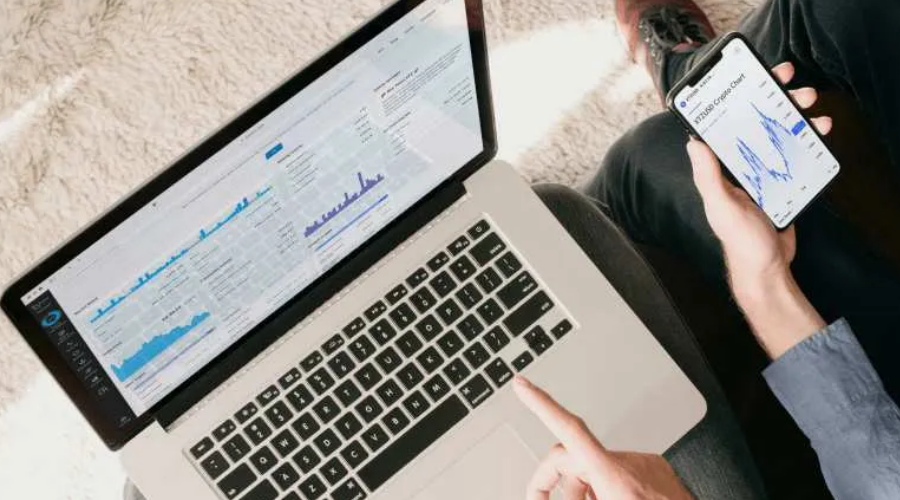Welcome to the world of cryptocurrency investing — an exciting, fast-paced, and sometimes overwhelming journey into the digital financial frontier. Whether you’ve heard about Bitcoin, Ethereum, or newer tokens making headlines, this guide will walk you through everything you need to know about how to invest in crypto safely and effectively.
What Is Cryptocurrency?
Cryptocurrency is a digital form of money that uses cryptography to secure transactions. Unlike traditional currencies like the U.S. dollar, cryptocurrencies operate on decentralized systems called blockchains. These networks are transparent, secure, and resistant to manipulation by any single authority.
The most well-known cryptocurrencies include Bitcoin (BTC), Ethereum (ETH), and Binance Coin (BNB), but there are thousands of others available. To get started with crypto for beginners, it’s important to understand how these assets work and what drives their value.
Why Invest in Cryptocurrency?
People invest in cryptocurrencies for many reasons: potential high returns, portfolio diversification, or a belief in blockchain’s future. While the market is volatile, crypto offers unique advantages:
- Decentralization: No central bank controls crypto, making it more transparent and accessible.
- Liquidity: Crypto markets run 24/7, allowing you to buy or sell anytime.
- Innovation: Blockchain technology powers smart contracts, decentralized finance (DeFi), and NFTs.
However, remember that cryptocurrency investing comes with risks. Price swings are common, and scams are prevalent. The key is to research, plan, and never invest money you can’t afford to lose.
Step 1: Educate Yourself
Before diving into the market, take time to learn how crypto works. Visit trusted educational platforms like CoinMarketCap Alexandria and Investopedia’s Crypto Guide to understand the basics.
Learning about blockchain, wallets, and exchanges helps you make informed decisions. Our internal resource, beginner’s crypto glossary (example.com), explains essential crypto terms in simple language to help you start confidently.
Step 2: Choose the Right Cryptocurrency
For beginners, the best strategy is to focus on well-established coins with proven track records. Bitcoin and Ethereum are the most popular starting points because of their stability and liquidity. You can explore other coins like Solana (SOL) or Cardano (ADA) once you’re comfortable with market trends.
Check reliable data on CoinGecko for current prices, market caps, and historical performance before buying any token.
Step 3: Select a Reputable Exchange
To buy crypto, you’ll need an exchange — an online platform where you can trade digital assets for fiat money. Some of the most trusted exchanges for crypto for beginners include:
When choosing an exchange, look for features like strong security measures, low trading fees, and user-friendly interfaces. Some platforms also offer mobile apps, making it easier to track your portfolio on the go.
Step 4: Set Up a Crypto Wallet
Your wallet is where you store your crypto assets. There are two main types:
- Hot Wallets: Internet-connected wallets like MetaMask or Trust Wallet. Convenient but more vulnerable to hacking.
- Cold Wallets: Offline devices such as Ledger or Trezor, offering higher security for long-term storage.
If you plan to hold crypto for years, consider investing in a Ledger hardware wallet. Security is crucial in cryptocurrency investing.
Step 5: Create an Investment Strategy
Like any investment, success in crypto depends on having a solid plan. Here are common strategies:
- Buy and Hold (HODL): Long-term investors buy crypto and hold it through market fluctuations.
- Dollar-Cost Averaging (DCA): Invest a fixed amount regularly to reduce the impact of market volatility.
- Active Trading: Buy and sell frequently to profit from short-term price movements — suitable for advanced investors.
To explore deeper strategies, visit crypto trading strategies for beginners (example.com).
Step 6: Diversify Your Portfolio
Don’t put all your funds into one coin. Diversifying your crypto portfolio helps reduce risk. A balanced portfolio might include 60% Bitcoin, 25% Ethereum, and 15% smaller altcoins.
Diversification also applies to industries. For instance, invest in DeFi tokens, gaming projects, and blockchain infrastructure coins to spread exposure across multiple sectors.
Step 7: Stay Safe and Avoid Scams
The crypto world is full of opportunities — and scammers. Watch out for fake giveaways, phishing websites, and projects promising guaranteed returns. Always double-check website URLs and never share your private keys.
For cybersecurity best practices, check out FTC’s phishing scam prevention guide.
Step 8: Keep Learning and Adapting
Cryptocurrency evolves fast. New projects, tokens, and technologies appear daily. To stay ahead, follow industry news and influencers. Reliable sources include Cointelegraph and Decrypt.
Remember: knowledge is your greatest asset when mastering how to invest in crypto. Keep learning, experimenting, and refining your strategy as the market matures.
Step 9: Understand Taxes and Regulations
Crypto profits are taxable in most countries. Always report your earnings accurately to avoid legal trouble. Use tools like Koinly or CoinTracker to calculate taxes on your trades.
Stay updated with government regulations in your area, as crypto laws are constantly changing.
Step 10: Start Small and Grow Gradually
For complete beginners, start with small investments — perhaps $50–$100 — to learn how the system works. As your confidence grows, you can expand your portfolio.
Remember, cryptocurrency investing is not about getting rich overnight. It’s about building long-term wealth through disciplined, informed decisions.
Final Thoughts: The Future of Crypto Investing
The future of crypto is bright, but success depends on how well you understand the market. By following this complete beginner’s guide to crypto investing, you’ll be better equipped to navigate the opportunities and challenges that come with digital assets.
Want to explore other investment options that pair well with crypto? Read our post on diversifying your digital investment portfolio (example.com) to balance risk and reward effectively.
Start small, stay consistent, and most importantly — stay informed. With the right approach, how to invest in crypto becomes less about speculation and more about smart, strategic investing for the future.







